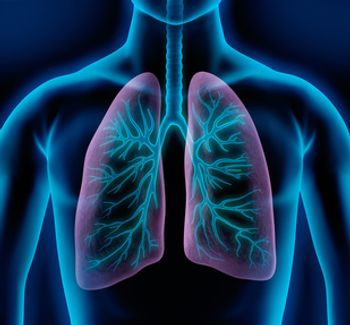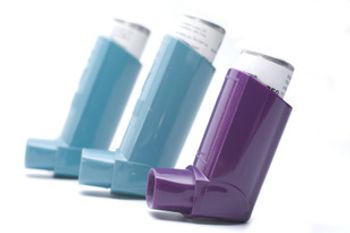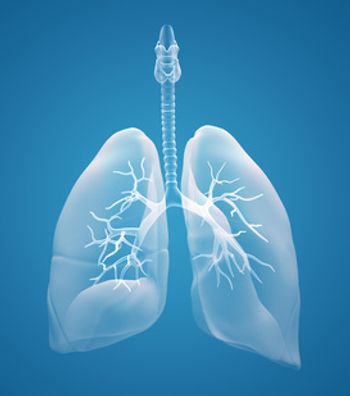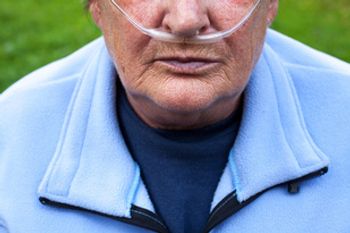
Chronic obstructive pulmonary disease (COPD) is associated with shorter survival and marked differences in early stages of non-small cell lung cancer (NSCLC).


Chronic obstructive pulmonary disease (COPD) is associated with shorter survival and marked differences in early stages of non-small cell lung cancer (NSCLC).

Patients with chronic obstructive pulmonary disease who have high-deductible health insurance plans may be more likely to avoid essential care due to costs compared to those who have low- or no-deductible plans.

Researchers determined that African Americans were less likely to participate in pulmonary rehabiliation programs and examined whether the location of the nearest program had an effect on likelihood of participation.

A new computer application could easily and reliably predict the short-term risk of adverse outcomes and guide treatment options for patients with chronic obstructive pulmonary disease who visited an emergency department due to an exacerbation.

Blood eosinophil (EOS) counts of 150 cells/mcL or greater were associated with increased chronic obstructive pulmonary disease (COPD)–related healthcare resource utilization compared with EOS counts less than 150 cells/mcL, regardless of multiple inhaler triple therapy use.

Video telehealth pulmonary rehabilitation intervention reduced the risk of 30-day readmission in patients with chronic obstructive pulmonary disease.

An analysis of adoption of and adherence to chronic obstructive pulmonary disease (COPD) Global Initiative for Chronic Obstructive Lung Disease (GOLD) guidelines in the primary care setting unearthed disappointing results, finding suboptimal use of pulmonary function tests, no routine use of validated symptoms scales for diagnosis, and variation in pharmacotherapy.

A randomized controlled trial found that patients hospitalized for an acute exacerbation of chronic obstructive poulmonary disease (COPD) experienced reduced rates of treatment failure when adding azithromycin to their standard of care.

A new study has examined whether rapid follow-up appointments within 10 days of discharge affect the risk of readmission for patients with chronic obstructive pulmonary disease who experience acute exacerbations that lead to hospitalizations.

Unreported exacerbations of chronic obstructive pulmonary disease (COPD) in clinical trials may be more prevalent than researchers realize, and this could cause them to underestimate the frequency of clinically significant exacerbations. This could affect the conclusions studies reach about the effectiveness of treatments.

Researchers examined risk factors that could lead to frequent physical or mental stress in Americans with chronic obstructive pulmonary disease (COPD).

In a review of revefenacin, researchers found that the drug may have the potential to serve as long-acting bronchodilator for once-daily treatment of respiratory disorders such as chronic obstructive pulmonary disease (COPD).

Among veterans admitted to the hospital for chronic obstructive pulmonary disease (COPD) exacerbation, women were evaluated and treated differently than men prior to hospitalization and had better hospital-associated outcomes.

A new study has found that prevalence rates of chronic obstructive pulmonary disease varied by occupation.

Changing patients from an inhaled corticosteroid (ICS)/long-acting β agonist (LABA) inhaler and long-acting muscarinic agonist (LAMA) inhaler to a LAMA/LABA inhaler and a separate ICS inhaler did not appear to affect patient-reported chronic obstructive pulmonary disease (COPD) symptom scores.

Diabetes is associated with an increased risk of death in patients with chronic obstructive pulmonary disease (COPD), but use of metformin can mitigate and even reverse this risk, according to a new study.

E-cigarettes have become increasingly popular in the United States since their introduction in 2007. Reported use has dramatically increased among adults and, alarmingly, youths, as well. Sales of e-cigarettes, other vaping devices, and e-liquids have increased nearly 1400% over the last decade.

Insurance status was found to potentially affect whether patients who used emergency department services were transferred to other hospitals, discharged, or admitted to hospitals.

By providing case management, self-management education, and skills training, integrated disease management is associated with fewer exacerbations and improved quality of life (QOL) among patients with chronic obstructive pulmonary disease (COPD) enagaged in primary care.

Individuals with an obstructive lung disease saw improvement in lung function when they replaced 30 minutes of sedentary time per day with strenuous or strength-building physical activity.

A review of studies assessing the impact of telemonitoring on chronic obstructive pulmonary disease (COPD) outcomes resulted in mixed findings.

Patients with chronic obstructive pulmonary disease (COPD) had lower medication adherence when taking 3 inhalers compared with 2, suggesting that reducing the number of inhalers for these patients may improve adherence.

Symptoms of dyspnea in a patient with chronic obstructive pulmonary disease (COPD), which were caused by pulmonary hyperinflation, were improved by endobronchial valve treatment.

Based on dehydroepiandrosterone and growth hormone levels, researchers have determined that chronic obstructive pulmonary disease (COPD) is associated with increased biological age.

Exposure to dust from the collapse of the World Trade Center has been associated with a multitude of respiratory outcomes. For the first time, researchers looked at how dwellings in Lower Manhattan were damaged, how they were repaired, how people cleaned up afterwards, and how these differences affected the likelihood of respiratory symptoms and diseases.

259 Prospect Plains Rd, Bldg H
Cranbury, NJ 08512
© 2025 MJH Life Sciences®
All rights reserved.
